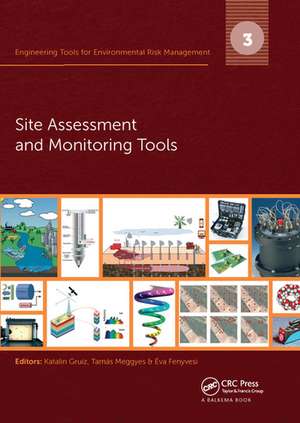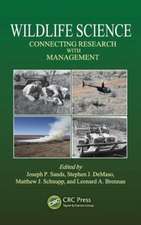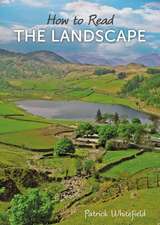Engineering Tools for Environmental Risk Management: 3. Site Assessment and Monitoring Tools: Engineering Tools for Environmental Risk Management
Editat de Katalin Gruiz, Tamas Meggyes, Eva Fenyvesien Limba Engleză Paperback – 30 iun 2020
• Environmental deterioration and pollution, management of environmental problems
• Environmental toxicology – a tool for managing chemical substances and contaminated environment
• Assessment and monitoring tools, risk assessment
• Risk reduction measures and technologies
• Case studies for demonstration of the application of engineering tools
The authors aim to describe interactions and options in risk management by providing a broad scientific overview of the environment, its human uses and the associated local, regional and global environmental problems; interpreting the holistic approach used in solving environmental protection issues; striking a balance between nature’s needs and engineering capabilities; understanding interactions between regulation, management and engineering; obtaining information about novel technologies and innovative engineering tools.
This third volume provides an overview on the basic principles, concepts, practices and tools of environmental monitoring and contaminated site assessment. The volume focuses on those engineering tools that enable integrated site assessment and decision making and ensure an efficient control of the environment. Some topics supporting sustainable land use and efficient environmental management are listed below:
• Efficient management and regulation of contaminated land and the environment;
• Early warning and environmental monitoring;
• Assessment of contaminated land: the best practices;
• Environmental sampling;
• Risk characterization and contaminated matrix assessment;
• Integrated application of physical, chemical, biological, ecological and (eco) toxicological characterization methods;
• Direct toxicity assessment (DTA) and decision making;
• Online analyzers, electrodes and biosensors for assessment and monitoring of waters.;
• In situ and real-time measurement tools for soil and contaminated sites;
• Rapid on-site methods and contaminant and toxicity assessment kits;
• Engineering tools from omics technologies, microsensors to heavy machinery;
• Dynamic characterization of subsurface soil and groundwater using membrane interface probes, optical and X-ray fl uorescence and ELCAD wastewater characterization;
• Geochemical modeling: methods and applications;
• Environmental assessment using cyclodextrins.
This book series focuses on the state of knowledge about the environment and its conscious and structured application in environmental engineering, management and decision making.
| Toate formatele și edițiile | Preț | Express |
|---|---|---|
| Paperback (2) | 325.06 lei 6-8 săpt. | |
| CRC Press – 30 iun 2020 | 325.06 lei 6-8 săpt. | |
| CRC Press – 30 iun 2020 | 326.00 lei 6-8 săpt. | |
| Hardback (2) | 887.17 lei 6-8 săpt. | |
| CRC Press – 8 aug 2014 | 887.17 lei 6-8 săpt. | |
| CRC Press – 27 apr 2015 | 1138.37 lei 6-8 săpt. |
Preț: 325.06 lei
Preț vechi: 385.62 lei
-16% Nou
Puncte Express: 488
Preț estimativ în valută:
62.21€ • 64.71$ • 51.36£
62.21€ • 64.71$ • 51.36£
Carte tipărită la comandă
Livrare economică 14-28 aprilie
Preluare comenzi: 021 569.72.76
Specificații
ISBN-13: 9780367574260
ISBN-10: 0367574268
Pagini: 462
Dimensiuni: 174 x 246 mm
Greutate: 1.06 kg
Ediția:1
Editura: CRC Press
Colecția CRC Press
Seria Engineering Tools for Environmental Risk Management
Locul publicării:Boca Raton, United States
ISBN-10: 0367574268
Pagini: 462
Dimensiuni: 174 x 246 mm
Greutate: 1.06 kg
Ediția:1
Editura: CRC Press
Colecția CRC Press
Seria Engineering Tools for Environmental Risk Management
Locul publicării:Boca Raton, United States
Public țintă
PostgraduateCuprins
Integrated and efficient characteriaation of contaminated sites
Monitoring and early warning in environmental management
In situ and real-time measurements in water monitoring
In situ and real-time measurements for effective soil and contaminated site management
Dynamic site characterization for brownfield risk management
Environmental geochemistry modeling: Methods and applications
Potential of cyclodextrins in risk assessment and monitoring of organic contaminants
Monitoring and early warning in environmental management
In situ and real-time measurements in water monitoring
In situ and real-time measurements for effective soil and contaminated site management
Dynamic site characterization for brownfield risk management
Environmental geochemistry modeling: Methods and applications
Potential of cyclodextrins in risk assessment and monitoring of organic contaminants
Notă biografică
Katalin Gruiz is Associate Professor at Budapest University of Technlogy, Budapest, Hungary.
She graduated in chemical engineering at Budapest University of Technology and Economics in 1975, received her doctorate in bioengineering and her Ph.D. in environmental engineering. Her main fields of activities are: teaching, consulting, research and development of engineering tools for risk-based environmental management, development and use of innovative technologies such as special environmental toxicity assays, integrated monitoring methods, biological and ecological remediation technologies for soils and waters, both for regulatory and engineering purposes. Prof. Gruiz has published 35 papers, 25 book chapters, more than hundred conference papers, edited 6 books and a special journal edition. She has coordinated a number of Hungarian research projects and participated in European ones. Gruiz is a member of the REACH Risk Assessment Committee of the European Chemicals Agency. She is a full time associate professor at Budapest University of Technology and Economics and heads the research group of Environmental Microbiology and Biotechnology.
Tamás Meggyes is Research Coordinator in Berlin, Germany.
He is specialising in research and book projects in environmental engineering. His work focuses on fluid mechanics, hydraulic transport of solids, jet devices, landfill engineering, groundwater remediation, tailings facilities and risk-based environmental management. He contributed to and organised several international conferences and national and European integrated research projects in Hungary, Germany, United Kingdom and USA. Tamás Meggyes was Europe editor of the Land Contamination and Reclamation journal in the UK and a reviewer of several environmental journals. He was invited by the EU as an expert evaluator to assess research applications and by Samarco Mining Company, Brazil, as a tailings management expert. In 2007, he was named Visiting Professor of Built Environment Sustainability at the University of Wolverhampton, UK. He has published 130 papers including eleven books and holds a doctor’s title in fluid mechanics and a Ph.D. degree in landfill engineering from Miskolc University, Hungary.
Éva Fenyvesi is senior scientist and founding member of CycloLab Cyclodextrin Research and Development Ltd, Budapest, Hungary.
She graduated as a chemist and received her PhD in chemical technology at Eotvos University of Natural Sciences, Budapest. She is experienced in the preparation and application of cyclodextrin polymers, in environmental application of cyclodextrins and in gas chromatography. She participated in several national and international research projects, in the development of various environmental technologies applying cyclodextrins. She is author or co-author of over 50 scientific papers, 3 chapters in monographs, over 50 conference presentations and 14 patents. She is an editor of the Cyclodextrin News, the monthly periodical on cyclodextrins.
She graduated in chemical engineering at Budapest University of Technology and Economics in 1975, received her doctorate in bioengineering and her Ph.D. in environmental engineering. Her main fields of activities are: teaching, consulting, research and development of engineering tools for risk-based environmental management, development and use of innovative technologies such as special environmental toxicity assays, integrated monitoring methods, biological and ecological remediation technologies for soils and waters, both for regulatory and engineering purposes. Prof. Gruiz has published 35 papers, 25 book chapters, more than hundred conference papers, edited 6 books and a special journal edition. She has coordinated a number of Hungarian research projects and participated in European ones. Gruiz is a member of the REACH Risk Assessment Committee of the European Chemicals Agency. She is a full time associate professor at Budapest University of Technology and Economics and heads the research group of Environmental Microbiology and Biotechnology.
Tamás Meggyes is Research Coordinator in Berlin, Germany.
He is specialising in research and book projects in environmental engineering. His work focuses on fluid mechanics, hydraulic transport of solids, jet devices, landfill engineering, groundwater remediation, tailings facilities and risk-based environmental management. He contributed to and organised several international conferences and national and European integrated research projects in Hungary, Germany, United Kingdom and USA. Tamás Meggyes was Europe editor of the Land Contamination and Reclamation journal in the UK and a reviewer of several environmental journals. He was invited by the EU as an expert evaluator to assess research applications and by Samarco Mining Company, Brazil, as a tailings management expert. In 2007, he was named Visiting Professor of Built Environment Sustainability at the University of Wolverhampton, UK. He has published 130 papers including eleven books and holds a doctor’s title in fluid mechanics and a Ph.D. degree in landfill engineering from Miskolc University, Hungary.
Éva Fenyvesi is senior scientist and founding member of CycloLab Cyclodextrin Research and Development Ltd, Budapest, Hungary.
She graduated as a chemist and received her PhD in chemical technology at Eotvos University of Natural Sciences, Budapest. She is experienced in the preparation and application of cyclodextrin polymers, in environmental application of cyclodextrins and in gas chromatography. She participated in several national and international research projects, in the development of various environmental technologies applying cyclodextrins. She is author or co-author of over 50 scientific papers, 3 chapters in monographs, over 50 conference presentations and 14 patents. She is an editor of the Cyclodextrin News, the monthly periodical on cyclodextrins.
Descriere
This volume describes the theory and methods of environmental risk assessment, the use of environmental effect, fate and hazard information in risk management of chemicals and contaminated land, explains why an integrated assessment is needed both for the risk of chemicals and polluted sites. Efficient tools such as early warning and environmental
Recenzii
"Volume 1 in the Engineering Tools for Environment Risk Management series, this book addresses engineering, management and legislation tools for caring for the environment. As it is the first volume, the book begins with a look at the important functions of a healthy ecosystem. The contributing authors then explore ways in which chemical substances, contaminated land, intensive agriculture, mining and waste management have changed the landscape and made it less able to provide important services to humans. Volume 1 concludes with an introduction to the foundations of progressive environmental protection including balancing the needs of nature and the desires of man, understanding how regulation can be used to your advantage, and the potential for the use of novel technologies to create a more promising future for the environment."
—Ringgold, Inc. Book News, February 2015
—Ringgold, Inc. Book News, February 2015










